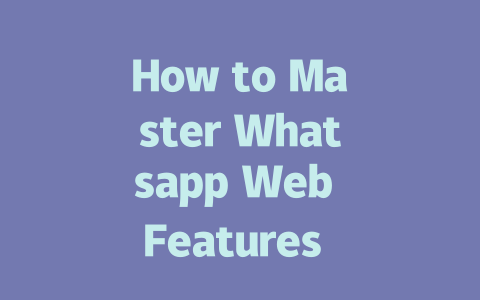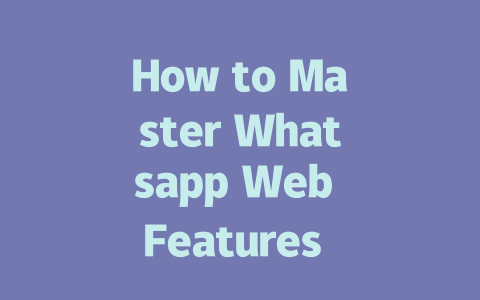How to Select Topics That Actually Get Noticed
The first step is picking topics people actually search for. Think about it: if no one’s searching for what you’re writing, they’ll never find it! Here’s where experience comes in. Last year, I was helping someone write posts on “general health tips,” and we barely got any clicks. Then I realized most folks don’t type broad terms—they go for something specific, like “how to reduce back pain after sitting all day.”
Why does this work better? Because Google’s search robots look at keywords in titles and descriptions to figure out whether your content matches what someone’s looking for. If your topic isn’t aligned with common searches, even great writing won’t help much. So, start by brainstorming ideas based on problems your audience might have. For example, instead of saying “ways to save money,” try narrowing it down to “saving $100 per month without giving up coffee.”
Real-Life Example: Testing Different Keywords
Let me share another quick story. A client once asked me to optimize his tech blog. His original title was “Best Laptops Under $2000.” While decent, it wasn’t super engaging. We changed it to “Top 5 Affordable Laptops Under $2000 for Students and Professionals.” Guess what happened? Click-through rates doubled almost instantly because we addressed both price-conscious students and working professionals who wanted value for money.
To refine your keyword research further, tools like Google Trends (nofollow) can show you which phrases people are really typing into the search bar. Try comparing different variations of your main idea to see which gets more interest over time.
Writing Titles That Make People Want to Click
Alright, so now you know how to choose topics, but what about making them irresistible? This part is crucial. When crafting a title, put the most important words right upfront. Take this example: “Simple Ways to Boost Your Website Traffic.” Meh. Now compare it to “Boost Website Traffic Fast With These Proven Strategies!” See how the second one grabs attention faster?
Here’s why it works: Google bots scan headlines quickly to understand what your page is about. By putting your key phrase near the beginning, you signal exactly what problem you solve. Plus, humans skim online content; shorter, punchier titles tend to perform better.
Breaking Down an Effective Title Formula
I often use this structure:
For instance, “New Mom Hacks to Stay Organized Without Losing Sleep” tells potential readers immediately who it applies to, what they’ll gain, and why it matters. Remember, according to a study from Backlinko (nofollow), emotional triggers in titles also improve engagement. Use excitement, curiosity, or urgency sparingly—it keeps users hooked.
Another tip: keep your titles under 60 characters whenever possible. Why? Search engines may cut off longer ones, leaving only half your message visible. Keep it concise and impactful!
Creating Content That Speaks Directly to Google—and Humans
Now let’s talk about the actual content itself. Writing for SEO doesn’t mean stuffing keywords everywhere. Instead, think of it as having a conversation with your reader while keeping Google’s robot happy too. Structure your article logically, breaking things into sections with clear headings. Subheadings not only guide readers visually but also help search engines interpret the hierarchy of information.
Building Content Flow Naturally
Imagine explaining a recipe to a friend. You wouldn’t jump straight to seasoning without talking prep work first, right? Same rule applies here. Start each section with background info, then build toward actionable advice. For example, if teaching someone how to set up WhatsApp Web:
Each paragraph should flow smoothly from one thought to the next. Avoid big blocks of text; break them up with bullet points or numbered lists when necessary. And remember, readability counts! Tools like Hemingway Editor can check for clarity and suggest improvements.
Adding Value Through Depth
According to Google’s official guidelines (nofollow), high-quality content provides answers beyond surface-level knowledge. Go deeper than just listing facts. Add anecdotes, real-life examples, or comparisons. For instance, rather than simply stating “use long-tail keywords,” elaborate on why they matter compared to short ones and include practical exercises.
Finally, always double-check your work for errors before publishing. Missing links or typos lower credibility fast. Using tools like Grammarly or Google Search Console (nofollow) ensures everything runs smoothly.
So there you go! These steps aren’t rocket science, but they do take practice. If you give them a shot, I’d love hearing how it goes. Maybe even drop me a note with challenges you face along the way—we’re all learning together, after all!
If you’re tired of constantly scanning the QR code every time you want to use Whatsapp Web, there’s actually a way around it. By enabling the “Keep me signed in” feature on your device, you can stay connected for up to 5-12 days without needing to re-scan. This is super convenient, especially if you frequently jump between your phone and computer. Just remember, logging out manually or unusual activity will still terminate your session, so keep an eye on that. It’s all about balancing convenience with security.
Security is always a top concern, and with Whatsapp Web, you don’t have to worry too much. The platform uses end-to-end encryption, which means only you and the person you’re chatting with can read those messages—no third parties involved. And while the encryption does most of the heavy lifting, staying secure also involves keeping your browser updated. Even small updates can patch vulnerabilities, making sure your conversations remain as private as possible. Plus, this regular maintenance helps not just with Whatsapp but improves your overall online safety.
# FAQs
# Can I use Whatsapp Web without scanning the QR code every time?
Yes, you can avoid scanning the QR code repeatedly by enabling the “Keep me signed in” option on your device. This feature keeps your session active for 5-12 days unless manually logged out or if the app detects unusual activity.
# Is my data secure while using Whatsapp Web in 2025?
Absolutely. Whatsapp Web uses end-to-end encryption, ensuring that only you and the person you’re communicating with can read your messages. Additionally, keeping your browser updated enhances security further.
# How do I access Whatsapp Web if I don’t have a stable internet connection?
For areas with poor connectivity, consider using the mobile app instead of Whatsapp Web. However, if you still prefer the web version, try connecting via Wi-Fi or enabling data compression settings in your browser.
# What happens if I lose my phone while being logged into Whatsapp Web?
If you lose your phone, immediately log out of all active sessions from another trusted device by visiting Whatsapp’s official site and selecting “Log Out Of All Sessions.” This prevents unauthorized access.
# Can I use multiple accounts on Whatsapp Web simultaneously?
No, Whatsapp Web supports only one account per browser instance. To switch accounts, you’ll need to log out of the current session and scan the new QR code for the desired account.




